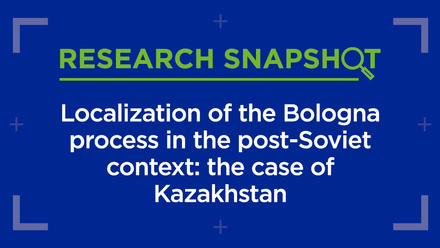Practical considerations for international partnerships

Having a large number of partnerships around the world will not necessarily guarantee that your higher education institution raises its international profile and reputation, but it can play an important role in achieving these objectives. International partnerships provide opportunities to attract a more diverse student body, and to promote greater mobility of staff and students. These partnerships also have the potential to make an impact on curriculum development, collaborative teaching programmes and research networks.
Partnerships provide multiple benefits
Partnerships can make a significant contribution to institutional internationalisation objectives, but only if those objectives are articulated and understood within the institution and shared with the partners. At an institutional level, partnerships provide opportunities for learning from each other, sharing knowledge and experience and benchmarking, but many institutions simply see partnerships in a more narrow and constrained way, in terms of the benefits they provide to those students/staff who engage in the mobility programmes.
Partnerships are for the long term
Setting up partnerships and negotiating agreements can be very time-consuming. For this reason, unless you see the relationship in terms of your institution’s medium- to long-term interests, it is probably best not to enter into it in the first place. Partners need time to get to know each other. Even if you have researched and perhaps visited your partner, there will be gaps in your knowledge about each other, and maybe some surprises! Partnerships will also evolve over time. There will be internal changes, such as leadership, staffing, funding arrangements, institutional strategy and perhaps external changes too, such as government policy.
Partnerships need a clear focus from the beginning
Almost everyone will have files of agreements that were signed in the past and which have never been activated. If they are to be successful, partnerships need to envisage some kind of activity at the very beginning of the relationship, no matter how small. Agreements that are really little more than expressions of good intentions rarely lead to anything.
Some partnerships may focus on a single ‘start-up’ activity, such as student exchange, but aim to become multi-dimensional in the longer term. It is, however, important to be realistic about what can be done to support a partnership, and about the level of resources that can be committed to making a partnership successful, not just at the beginning of the relationship, but also in steady state.
Institutions have very different approaches to the management of partnerships. Some institutions insist on all agreements receiving high-level, central approval. Other institutions may devolve the power to set up agreements to faculties, departments or even individuals. In all cases it is important to know who are the institution’s authorised signatories, and to provide clear guidance about approval processes, together with standard agreement templates, in order to safeguard the institution from unnecessary risk.
Partnerships work best with partners who are ‘like us’
Identifying the right partners is a critical success factor. All institutions receive approaches from prospective partners, and while this may lead to a positive and mutually beneficial relationship, it is also important to be proactive, and identify your own preferred partners. Your criteria will depend on your objectives and priorities, such as the nature of the envisaged partnership’s activities, geographical location etc. Some institutions place a particular emphasis on partners of similar status and consider rankings to be an important factor in partner selection. Some, especially publicly-funded, institutions may have concerns about working with institutions in the private sector or commercial organisations. However, depending on the objectives of the partnership, and the country concerned, these may be the most appropriate partners.
Whatever your criteria, it is important to research your prospective partners and to take some time to understand what each partner wants from the partnership. It is also important to ensure that you present your own institution effectively to prospective partners. However much your prospective partner may look ‘like us’, there will inevitably be differences of culture, approach and expectations.
In conclusion, establishing partnership agreements provides an opportunity to define the relationship, manage expectations and clarify any misperceptions. All time spent at this stage is a good investment for the future relationship. Trust is important, but is never a substitute for good practice and a professional approach.






